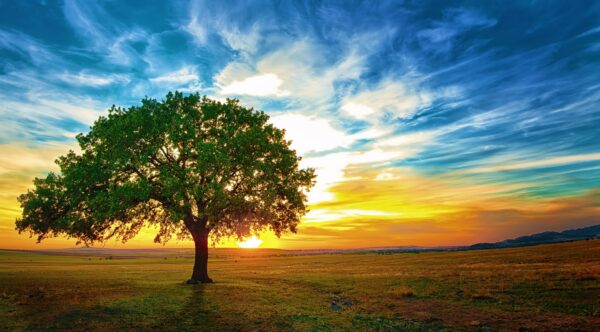
As more people opt for cremation, the question of what to do with the ashes has become incredibly important. While many store the ashes in an urn in their home, there’s the issue of what to do with the ashes when those people die; their children and grandchildren may have no emotional connection to the person whose cremains have been sitting on a shelf.
Scattering ashes is possible, but not everyone knows how to do it legally. Plus, not everyone likes the idea of scattering their loved ones over large areas.
A newer option is to use a biodegradable urn, one that slowly disappears over time after being buried in soil. Many like to place these urns under trees because they like the image of their loved one becoming part of nature. But like any option, you’ll have to consider the pros and cons of the process.
Creating a Mostly Permanent Memorial
An advantage to the biodegradable urn that you bury next to a tree is that it creates a memorial that you can visit. Scattering ashes at sea, for example, makes any memorial spot you set up rather ephemeral. It’s there, but nothing from your loved one is there.
Burying a biodegradable urn by a tree creates an actual spot that you can go to where you know part of your loved one exists. It isn’t totally permanent because eventually, the tree at that spot will die and have to be removed, or you’ll sell your home years from now and have to leave the ashes behind. But for as long as you’re living there, and as long as the tree lives, you’ll have that spot.
Planting a New Tree for Soil Safety
There is one major issue with using a biodegradable urn: It means the cremains will sit in one spot, displacing nutritious soil that the tree’s roots want. As the exterior urn disappears over time, the remaining ball of ashes would form a concentrated lump of minerals in the soil, which can be bad for the tree.
That makes burying the cremains by an existing tree rather difficult. One alternative is to get a special biodegradable urn that contains a tree seed and soil, and plant that in an open area. The ashes would still be buried in one spot, but they’d be diluted in this new soil. When the urn degrades, what’s left is mineral-rich soil and a seedling, rather than this concentrated pile that can negatively impact soil nutrition.
Finding a Location in the First Place
For people who own a home with a yard and who are able to plant trees there, the biodegradable urn (with seedling or without) could be a good choice. It makes honoring your loved one relatively simple as long as you’re not planning to sell your home.
But for those who live in flats, those who live in areas where landscaping is heavily controlled, those planning to sell their home soon, and those who aren’t comfortable with cremains in their yards, it’s more complicated. In all those cases, you’ll need to find a location in which you can place the urn.
If you’re still having your loved one cremated but can’t decide on what type of urn to have or whether to scatter the ashes, you’ll want to speak with a cremation service that helps families plan the entire process from start to finish. If you’re in the Brisbane and Gold Coast regions, contact Cremations Only to discuss what you should do.
